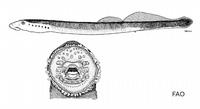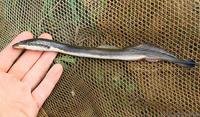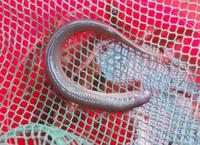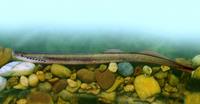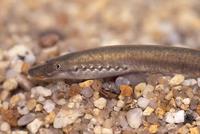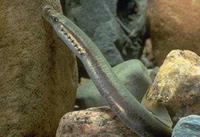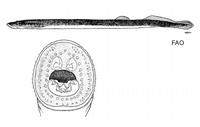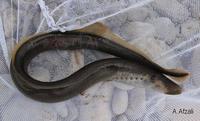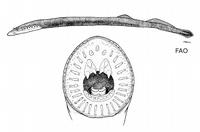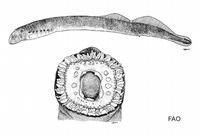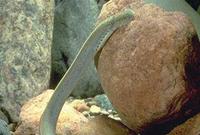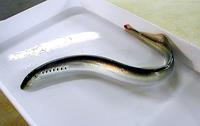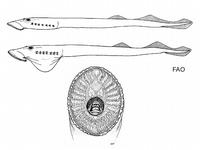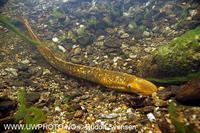Lampreys (Petromyzontidae) fish profile and information / pictures of Lampreys - Petromyzontidae
Lampreys (Petromyzontidae) fish profiles
Lamp ray information and info on the Petromyzontidae also known as Lampreys Lampreys (sometimes also called lamprey eels) are a family of jawless fish, whose adults are characterized by a toothed, funnel-like sucking mouth. While lampreys are well-known for those species which bore into the flesh of other fish to suck their blood, most species of lamprey are non-parasitic and never feed on other fish. In zoology, lampreys are sometimes not considered to be true fish because of their distinctive morphology and physiology. Lampreys live mostly in coastal and fresh waters, although some species, (e.g. Geotria australis, Petromyzon marinus, Entosphenus tridentatus) travel significant distances in the open ocean, as evidenced by their lack of reproductive isolation between populations. They are found in most temperate regions except those in Africa. Their larvae have a low tolerance for high water temperatures, which may explain why they are not distributed in the tropics. Adults physically resemble eels, in that they have no scales, and can range anywhere from 13 to 100 centimetres (5 to 40 inches) long. Lacking paired fins, adult lampreys have large eyes, one nostril on the top of the head, and seven gill pores on each side of the head. The unique morphological characteristics of lampreys, such as their cartilaginous skeleton, suggest that they are the sister taxon (see cladistics) of all living jawed vertebrates (gnathostomes), and are usually considered the most basal group of the Vertebrata. They feed on prey as adults by attaching their mouthparts to the target animal's body, then using their teeth to cut through surface tissues until they reach blood and body fluid. They will generally not attack humans unless starved. Hagfish, which superficially resemble lampreys, are the sister taxon of the true vertebrates (lampreys and gnathostomes). Lampreys provide valuable insight into the evolution of the adaptive immune system, as they possess a convergently evolved adaptive immunity with cells that function like the T cells and B cells seen in higher vertebrates. Lamprey leukocytes express surface variable lymphocyte receptors (VLRs) generated from somatic recombination of leucine-rich repeats gene segments in a recombination activating gene-independent manner. Geotria australis larvae also have a very high tolerance for free iron in the body, and have well-developed biochemical systems for detoxification of the large quantities of this metal. |
|
|



